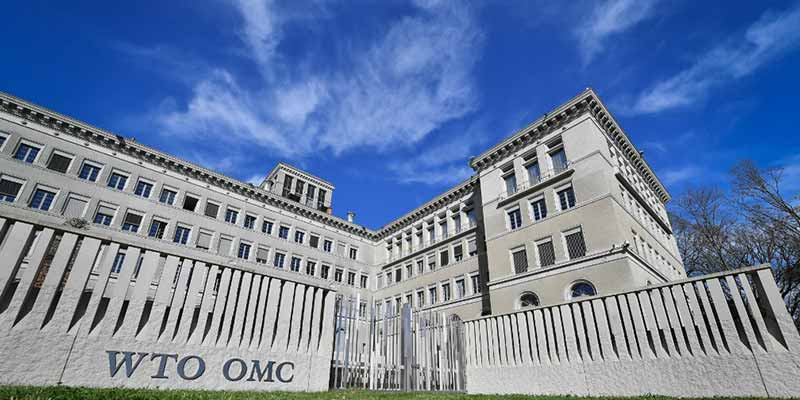- India
- May 14
- Sreesha V.M
India mulls retaliatory duties against US over steel, aluminium tariffs
• India has proposed to impose retaliatory duties under the World Trade Organisation (WTO) norms against the US over American tariffs on steel and aluminium in the name of safeguard measures.
• The safeguard measures would affect $7.6 billion imports into the US of the relevant products originating in India, on which the duty collection would be $1.91 billion.
• Accordingly, India’s proposed suspension of concessions would result in an equivalent amount of duty collected from products originating in America.
• The proposal assumes significance as both countries are negotiating a bilateral trade agreement.
What is the issue about?
• On March 8, 2018, the US promulgated safeguard measures on certain steel and aluminium articles by imposing 25 per cent and 10 per cent ad valorem tariffs (a charge levied on imports, defined in terms of a fixed percentage of value), respectively. It came into effect on March 23, 2018. It was extended in January 2020.
• On February 10 this year, the US again revised the safeguard measures on imports of steel and aluminium articles, effective from March 12, 2025, and with an unlimited duration. Now, it has imposed 25 per cent tariffs.
• India maintains that the measures taken by the US are not consistent with the General Agreement on Tariffs and Trade (GATT) and Agreement on Safeguards (AoS). As consultations provided for under a provision of the AoS have not taken place, India reserves the right to suspend concessions or other obligations that are substantially equivalent to the adverse effects of the measure to India’s trade.
• India has taken up the tariff issue bilaterally also.
• The first Trump administration, in 2018, imposed a 25 per cent duty on certain steel items and a 10 per cent duty on aluminium products on the grounds of national security. In retaliation, India in June 2019 slapped customs duties on 28 US products, including almonds and walnuts. India had also filed a complaint in the WTO.
• Earlier in April, India had sought consultations with the US under the WTO’s safeguard agreement, following American authorities’ decision to impose these tariffs.
• On the request for consultation, the US informed the WTO that its decision to impose the tariffs was based on national security grounds and should not be considered as safeguard measures.
• The proposed suspension of concessions or other obligations takes the form of an increase in tariffs on selected products originating in the United States.
• Without prejudice to the effective exercise of its right to suspend substantially equivalent obligations, India reserves its right to suspend concessions after the expiration of 30 days from the date of this notification.
• To ensure the effective exercise of its right to suspend substantially equivalent concessions, India also reserves its right to adjust the products as well as the tariff rates.
• India reserves the right to withdraw, modify, supplement or replace this notification, and/or make a further notification or notifications as and when required.
• India will inform both the Council for Trade in Goods and the Committee on Safeguards of its next steps.
What is the WTO?
• The World Trade Organisation (WTO) is the only global international organisation dealing with the rules of trade between nations.
• The primary purpose of the WTO is to open trade for the benefit of all.
• At its heart are the WTO agreements, negotiated and signed by the bulk of the world’s trading nations and ratified in their parliaments. The goal is to ensure that trade flows as smoothly, predictably and freely as possible.
• The WTO came into being on January 1, 1995. But its trading system is half a century older. Since 1948, the General Agreement on Tariffs and Trade (GATT) had provided the rules for the system. Whereas GATT had mainly dealt with trade in goods, the WTO and its agreements cover trade in services, and in traded inventions, creations and designs (intellectual property).
• The WTO provides a forum for negotiating agreements aimed at reducing obstacles to international trade and ensuring a level playing field for all, thus contributing to economic growth and development.
• It also provides a legal and institutional framework for the implementation and monitoring of these agreements, as well as for settling disputes arising from their interpretation and application.
• The WTO currently has 166 members, accounting for 98 per cent of world trade. A total of 25 countries are negotiating membership.
• The WTO’s top level decision-making body is the Ministerial Conference, which meets usually every two years.
• WTO activities are supported by a Secretariat led by the WTO Director-General. The Secretariat is located in Geneva, Switzerland.
• The General Council meets regularly to carry out the functions of WTO. It has representatives (usually ambassadors or equivalent) from all member governments and has the authority to act on behalf of the ministerial conference which only meets about every two years.
(The author is a trainer for Civil Services aspirants.)

